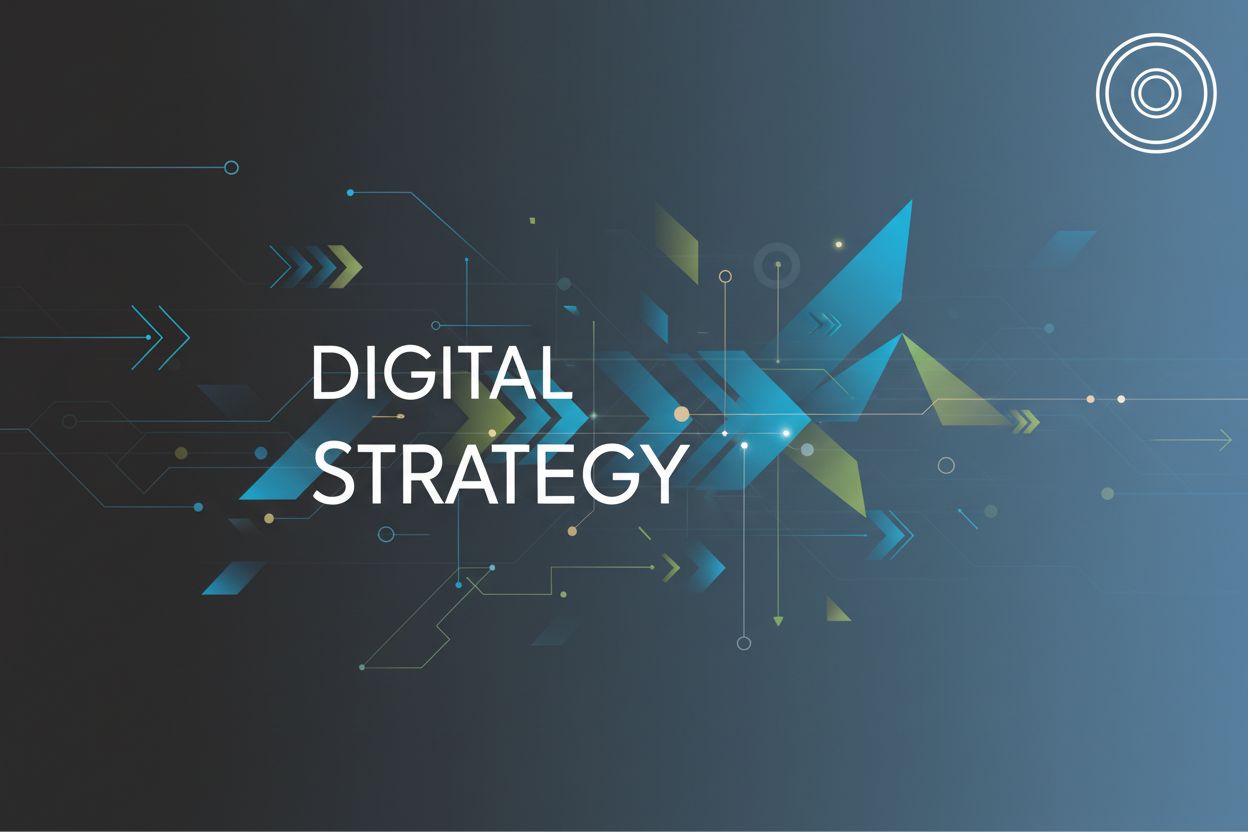The 5 C's of Digital Marketing: Key Concepts Explained
TL;DR
Introduction: Why the 5 C's Still Matter
Okay, so, I know what you're thinking: another framework? But trust me on this one. The digital world, it's always changing, right? Like trying to hit a moving target while blindfolded. That's where the 5 C's comes in. It's a foundation you can actually build on, no matter how crazy things get.
Think of it as your marketing compass, not a rigid map. Here's why it still matters: Company, Customers, Competitors, Collaborators, and Context. These five elements provide a structured approach to navigate the constant flux of the digital landscape, helping you stay adaptable and effective.
Next up, we'll dive into the first "C": Company, and how to understand your own brand.
C #1: Company – Know Thyself (and Your Brand)
Okay, so you've nailed down who you're talking to. Great! But before you run off and start blasting emails, let's pump the brakes for a sec, alright? Gotta look inward first. It's like, you can't sell ice to eskimos if you don't even know what kind of ice you're selling, or if you even have any ice to begin with, ya know?
- Brand Identity Matters: This ain't just about slapping a logo on everything. It's about who you are. What do you stand for? What's your mission? What tone of voice do you use? Think Patagonia for example – their commitment to environmentalism isn't just marketing fluff; it's baked into their entire identity, influencing their marketing decisions and resonating deeply with their audience. Understanding your own brand's core values and mission is crucial for creating authentic and impactful digital marketing strategies.
- Know Your Strengths (and Weaknesses): What are you good at? What resources do you have? Do you have a killer content team, or are you relying on interns who think tiktok is just for dancing? Be honest with yourself.
- Align with the Big Picture: Your marketing efforts can't just be some rogue operation. It needs to sync up with the overall business goals. Are you trying to boost sales? Increase brand awareness? Drive traffic to your website? Make sure everyone's on the same page.
It's like, you can't build a house on a shaky foundation. Understanding your company – its values, capabilities, and goals – is the bedrock of any successful digital marketing strategy. Ignoring this part? Well, good luck with that. Next, we'll move on to understanding your audience.
C #2: Customers – Understanding Your Audience
Did you know that, like, 88% of customers think that the experience a company provides is just as important as its product? (Source: Salesforce) That's wild, right? So, yeah, understanding your customers is kinda important, wouldn't you say?
Deep Dive into Demographics (and Beyond): It's not enough to know your customer is a 35-year-old woman living in the suburbs. Dig into her values. What does she care about? Is she all about sustainability? Does she value convenience over price? What are her hobbies? The more you know, the better you can tailor your message.
Embrace the Power of Empathy: Put yourself in your customer's shoes. What are their pain points? What keeps them up at night? A healthcare provider might find patients are frustrated with complicated billing processes, or a financial company might learn customers are anxious about retirement planning. Addressing those anxieties directly? Huge win.
Listen Up (Seriously!): Social media isn't just for posting pretty pictures. It's a goldmine of customer feedback. What are people saying about your brand? What are they saying about your competitors? Are there recurring complaints or praise? Tools like social listening platforms can help you track these conversations, so you're not just flying blind.
Think about a small, local bookstore. They might notice, through customer interactions and online reviews, that their community is really into local authors. So, they start hosting more events featuring local writers, creating a real sense of community.
Now that we've got a good handle on customers, let's look at the competition.
C #3: Competitors – Keeping an Eye on the Playing Field
Alright, so you've figured out who you are and who you're selling to. Now, who else is playing the game? Ignoring your competitors? That's like trying to win a race with your eyes closed.
- Identify the Players: Obvious, right? But don't just look at the big names. Who are the smaller, up-and-coming companies nipping at your heels? What about companies in adjacent markets that could move into your space? For example, a meal kit delivery service should keep an eye on grocery stores offering more prepared meals.
- Spy (Ethically!) on Their Moves: What are they posting on social media? What kind of ads are they running? What keywords are they targeting? Tools like SEMrush and Ahrefs can help you dig into this kinda stuff. Just don't go full-on stalker-mode, okay?
- SWOT it Out: Strengths, Weaknesses, Opportunities, Threats. Classic for a reason. What are your competitors good at? Where do they suck? Where can you swoop in and gain a competitive advantage?
Benchmarking isn't just about copying what works. It's about seeing what's possible. If a competitor is crushing it with video marketing, maybe it's time to dust off your camera. But don't just replicate – innovate! What can you do better? Maybe they're ignoring a specific customer segment, or their customer service is terrible. Exploit those weaknesses!
Okay, so now you know who you're up against. Next, we'll explore building strategic partnerships.
C #4: Collaborators – Building Strategic Partnerships
Ever stop to think how much faster you could go if you weren't trying to do everything yourself? That's where collaborators come in; it's not just about networking, but building genuine, strategic partnerships.
Identify the Right Fit: It's gotta be more than just a logo swap. Look for companies, or even influencers, whose values align with yours. Think about a sustainable clothing brand teaming up with an environmental non-profit. It makes sense, right? It's authentic, not just some random cash grab. Or, consider a small healthcare clinic partnering with a larger hospital network. This could translate into digital marketing advantages like shared online resources, cross-promotion of digital services, and expanded reach through joint digital campaigns.
Don't Underestimate Influencers: I know, I know, influencer marketing can feel a little...cringey. But a genuine influencer can be a game changer. It's not just about follower count; it's about engagement and trust. A financial advisor, for instance, can partner with a personal finance blogger to reach a wider audience and build credibility.
Strategic Alliances are Key: Think bigger than just a one-off campaign. Strategic alliances – even joint ventures – can bring serious firepower. Sharing resources, expertise, even technology, can unlock growth opportunities you couldn't reach alone. But, make sure the agreement is crystal clear; a little ambiguity can snowball into a massive legal headache real quick.
Collaborations are a force multiplier. Get it right, and suddenly you're not just one player, but part of a whole team. Now, let's dive into the fifth "C": Context.
C #5: Context – Understanding the Bigger Picture
Okay, so you've got your company, customers, competitors, and collaborators all lined up. But what about the world around them? Ignoring that? That's like, sailing a ship without checking the weather forecast, ya know?
PESTLE Analysis: This is where you break down the Political, Economic, Social, Technological, Legal, and Environmental factors that could impact your digital marketing. For example, new data privacy laws (legal) could force you to rethink your entire email marketing strategy. Or, a sudden economic downturn (economic) might mean customers are less willing to splurge on fancy upgrades.
Industry Trends: What's hot, what's not? Are people ditching Facebook for TikTok? Is everyone suddenly obsessed with ai chatbots? Keeping your finger on the pulse means you can adapt quickly, not get left in the dust.
A Culture of Innovation: This ain't just about brainstorming sessions with beanbag chairs. It's about fostering an environment where people feel safe to experiment, fail fast, and learn from their mistakes. Think about a healthcare company that encourages its marketing team to test out new telehealth platforms. Even if some of those platforms don't pan out, this experimentation fosters a culture of learning and adaptability, which is crucial for developing a more agile and effective digital marketing strategy in the long run.
It all boils down to being adaptable. In the digital world, change is the only constant. So, buckle up and get ready for the ride! Next up, we'll wrap up with a quick summary.
Conclusion: Implementing the 5 C's for Digital Success
So, you've made it this far! Feels good, right? Now, let's pull it all together. The 5 C's – Company, Customers, Competitors, Collaborators, and Context – aren't just buzzwords; they create a roadmap for digital success.
- Company: Knowing your brand inside and out? That's the baseline. It's about more than just a logo; it's about authenticity. So, don't skip this step, or else.
- Customers: Seriously, understand who you're talking to. Tailor your message, and they'll actually listen.
- Competitors: Keep an eye on what others are doing, but don't just copy. Innovate and find your own edge, yeah?
- Collaborators: Partnerships can amplify your reach. Find allies whose values align with yours – it's a total game changer.
- Context: The world's always changing, so you gotta stay adaptable. PESTLE analysis is your friend here.
Implementing the 5 C's isn't a one-and-done deal. It's like, an ongoing process.
- Schedule quarterly reviews for each "C" to ensure your strategy stays relevant. Integrating these reviews into regular team meetings can help keep everyone aligned and informed.
- Assign ownership for tracking changes and insights within each "C" area to specific team members or departments.
- Don't be afraid to experiment and adapt. Not everything will work perfectly, and that's okay.
Ready to transform your digital marketing? Start applying the 5 C's today, and watch your strategy come to life. Seriously, what are you waiting for?




